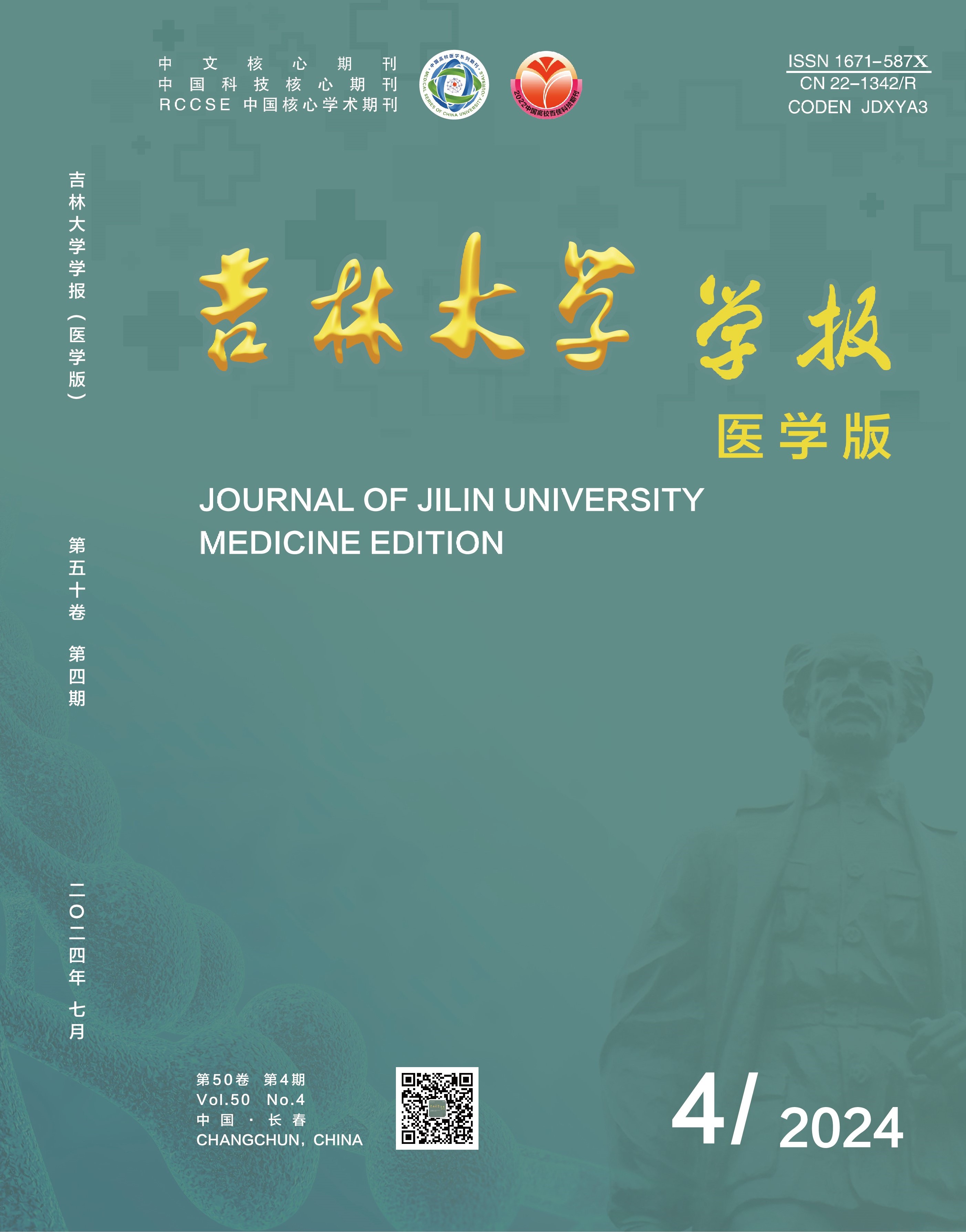|
|
Effect of NRP1 gene knockout on process of radiation-induced pulmonary fibrosis and its mechanism
DONG Zhuo, LI Jiale, CHEN Xiaoyi, WANG Rui, YI Junxuan, WEI Xinfeng, JIN Shunzi
Journal of Jilin University(Medicine Edition). 2020, 46 (01):
26-34.
DOI: 10.13481/j.1671-587x.20200105
Objective: To observe the effect of neuroopilin-1(NRP1) gene on the process of radiation-induced pulmonary fibrosis(RIPF), and to explore its roles in the occurrence and development of epithelial-mesenchymal transition(EMT) mediated by Wnt/β-catenin pathway tail identification was performed in and TGF-β1/Smads pathway, and extracellular matrix (ECM) deposition. Methods: The Cre-LoxP recombinase system was used to construct the transgenic C57BL/6J mice with NRP1 gene specific knockout in alveolar type Ⅱ epithelial cells(AT-Ⅱ) and the mice. A total of 160 mice were randomly divided into 4-week group, 8-week group, 16-week group and 24-week group. In each group, the mice were randomly divided into wild type (Con) group, wild type+irradiation (IR) group, NRP1 gene-specific knockout (KO-Con) group, NRP1 gene-specific knockout+irradiation (KO+IR) group according to the method of random number table;there were 10 mice per group. In KO-Con and KO+IR groups, the NRP1 gene was specifically knocked out in the AT-Ⅱ cells by intraperitoneal injection of tamoxifen, and the mouse models of RTPF were established by 20 Gy total thoracic irradiation in IR group and KO+IR group. After the models were constructed, HE staining and Masson staining were used to verify whether the models were successfully constructed. Immunohistochemistry (IHC) method was used to detect the type Ⅰ collagen (Col Ⅰ) and α-smooth muscle actin (α-SMA) protein expression levels; Western blotting method was performed to detect the NRP1, β-catenin, TGF-β1,and Smad2 protein expression levels in the lung tissue of the mice; Quantitative fluorensence real-time polymerase chain reaction (qRT-PCR) method was used to detect the expression levels of NRP1, Col Ⅰ, α-SMA, β-catenin, TGF-β1, Smad2, E-cadherin, N-cadherin, and Vimentin mRNA in the lung tissue of the mice. Results: The results of HE and Masson staining showed the RTPF models were suceessfully established,and the lung tissue of the mice in IR group mainly showed the pathomorphology of radiation pneumonitis. Compared with Con group, the protein and mRNA expression levels of NRP1 in the lung tissue of the mice in IR group were gradually increased with the prolongation of time(P<0.05), and reached the highest at 24 weeks (P<0.01).Compared with Con group, the expression levels of Col Ⅰ,α-SMA, β-catenin, TGF-β1, and Smad2 proteins and mRNA in the lung tissue of the mice in IR group and KO+IR group were increased gradually with the prolongation of time (P<0.05 or P<0.01).Compared with IR group, the expression levels of Col Ⅰ,α-SMA, β-catenin, TGF-β1, and Smad2 protein and mRNA in the lung tissue of the mice in KO+IR group were significantly decreased(P<0.05 or P<0.01), but they were higher than those in Con group(P<0.05 or P<0.01).Compared with Con group, the expression levels of the epithelial cell marker E-Cadherin mRNA in the lung tissue of the mice in IR group and KO+IR group were gradually decreased with the prolongation of time(P<0.01), and the expression levels of the interstitial cell markers N-Cadherin and Vimentin were increased (P<0.05 or P<0.01), but the expression levels of E-cadhern mRNA in the lung tissue of the mice in KO-IR group were significantly higher than those in IR group(P<0.05 or P<0.01),and the expression levels of N-Cadherin and Vimentin mRNA in the lung tissue of the mice in KO+IR group at each time point were lower than those in IR group (P<0.05or P<0.01). Conclusion: Knockout of NRP1 gene can inhibit the occurrence and development of RTPF, and its mechanism may be involved in regulating the expressions of Wnt/β-catenin and TGF-β1/Smads signaling pathways in the lung tissue and inhibiting the EMT process in the mice.
References |
Related Articles |
Metrics
|

 Table of Content
Table of Content
 Guide to Authors
Guide to Authors


